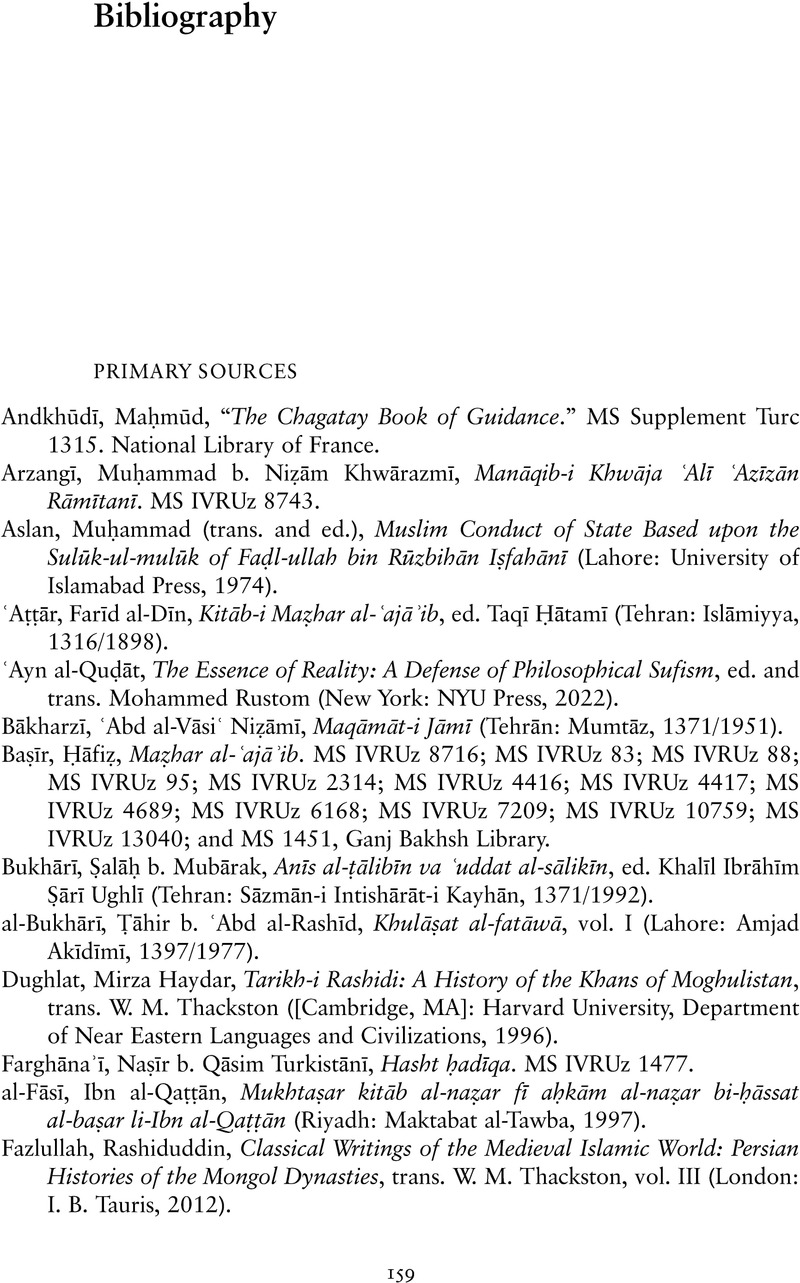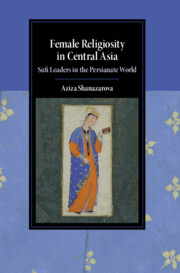Book contents
- Female Religiosity in Central Asia
- Cambridge Studies in Islamic Civilization
- Female Religiosity in Central Asia
- Copyright page
- Dedication
- Contents
- Figures
- Acknowledgments
- Abbreviations
- Introduction
- 1 Religion and Politics in Post-Timurid Central Asia
- 2 The Centrality of ʿAlidism in the Maẓhar al-ʿajāʾib
- 3 Locating the Great Lady within the Sufi Milieu of Sixteenth-Century Central Asia
- 4 The Chaghatay Book of Guidance
- 5 The Portrayal of the Great Lady in the Maẓhar al-ʿajāʾib
- 6 The Great Lady and Her Hagiographers
- 7 The Great Lady in Shrine Traditions
- Conclusion
- Bibliography
- Index
- Other titles in the series:
- References
Bibliography
Published online by Cambridge University Press: 25 April 2024
- Female Religiosity in Central Asia
- Cambridge Studies in Islamic Civilization
- Female Religiosity in Central Asia
- Copyright page
- Dedication
- Contents
- Figures
- Acknowledgments
- Abbreviations
- Introduction
- 1 Religion and Politics in Post-Timurid Central Asia
- 2 The Centrality of ʿAlidism in the Maẓhar al-ʿajāʾib
- 3 Locating the Great Lady within the Sufi Milieu of Sixteenth-Century Central Asia
- 4 The Chaghatay Book of Guidance
- 5 The Portrayal of the Great Lady in the Maẓhar al-ʿajāʾib
- 6 The Great Lady and Her Hagiographers
- 7 The Great Lady in Shrine Traditions
- Conclusion
- Bibliography
- Index
- Other titles in the series:
- References
Summary

- Type
- Chapter
- Information
- Female Religiosity in Central AsiaSufi Leaders in the Persianate World, pp. 159 - 171Publisher: Cambridge University PressPrint publication year: 2024



